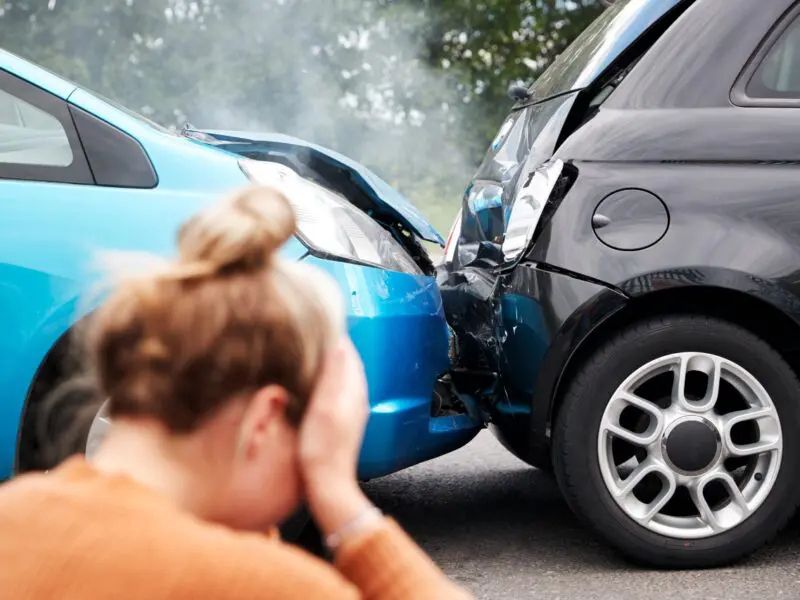After a car accident, one of the first questions many people ask is: Do I really need a lawyer to settle my claim? It’s a fair question. If your accident was minor and you’re hoping to avoid legal fees, you might be wondering whether you can handle the claim yourself.
The truth is: yes, in certain cases you can settle a car accident claim without a lawyer—but it depends a lot on your specific situation. In some cases, especially those involving serious injuries, uninsured motorists, multi-vehicle collisions, and disputed liability, trying to deal with insurance companies on your own can end up costing you far more than hiring an experienced car accident attorney.
This guide will walk you through how to settle a car accident claim without a lawyer, explain when it might be appropriate, and help you recognize when it’s time to get legal help. As always, if you’re unsure, The Hassell Law Group offers free consultations to help you make the right decision for your case.
When It Might Make Sense to Handle a Claim Without a Lawyer
Not every accident requires legal representation. In certain situations, settling a claim on your own could be reasonable and efficient. It may make sense to go the DIY route if:
- The accident involved only property damage
- You had no injuries, or only minor ones that didn’t require ongoing care
- Liability is clear, and the other driver admits fault
- The insurance company is cooperative and not disputing your claim
- You have the time to handle ongoing communications with the insurer
- You’re comfortable negotiating with insurance adjusters and organizing paperwork
If all of the above are true, you might be able to handle your claim without legal assistance. Just be sure to follow the steps below and protect yourself during the process. Be aware that if you start handling your car accident claim by yourself, and subsequently find that you need legal help after all, it may be difficult to find a lawyer who is willing to take your case at that point.
Step-by-Step: How to Settle a Car Accident Claim Without a Lawyer
Step 1: Gather All the Evidence
Start by collecting everything you can related to the accident:
- Photos of vehicle damage, the accident scene, and of your injuries
- A copy of the police report (if available)
- Contact info for the other driver and any witnesses
- Medical records and bills (even for minor treatment)
- Pay stubs or proof of income if you missed any work
Documentation is the backbone of your claim. The more you have, the stronger your case.
Step 2: Get a Medical Evaluation
Even if you might feel fine, see a doctor as soon as possible after an accident. Some injuries—like whiplash or concussion may not show up right away. Getting evaluated early not only protects your health but also creates a medical record that supports your claim if symptoms appear later.
Step 3: Calculate Your Total Damages
You’ll need to determine how much compensation to ask for. Your damages may include:
- Medical bills (past and future)
- Lost wages
- Property damage (car repairs, value of a totaled vehicle)
- Pain and suffering (if applicable)
Use receipts, estimates, and records to calculate your financial losses. Estimating pain and suffering is trickier and is often where unrepresented claimants leave money on the table.
Step 4: File the Claim with the At-Fault Driver’s Insurance
Contact the other driver’s insurance company and open a claim. Be brief and factual when describing what happened. Avoid downplaying your injuries or admitting fault.
Let them know you’ll be submitting a demand letter once you’ve collected all the necessary documentation.
Step 5: Write and Send a Demand Letter
A demand letter is a formal request for compensation. It should include:
- A description of the accident
- A summary of your injuries and treatment
- A breakdown of your damages
- The total amount you’re requesting
- A deadline for their response (usually 15–30 days)
Be polite and professional. This is your opportunity to make a strong case and show the insurer that you’ve done your homework. A demand letter should be sent by Certified Mail.
Step 6: Negotiate the Settlement
Once the insurance company reviews your demand, they may:
- Accept your request (rare)
- Make a counteroffer
- Deny the claim altogether
Be prepared to negotiate. Stand your ground but stay professional. If they offer a settlement that seems too low, don’t be afraid to push back with evidence that supports the compensation you requested. If you are unable to obtain a fair offer, seek consultation from a personal injury attorney. Most personal injury attorneys work on a contingency fee basis, meaning you don’t need to pay them anything up front, and they are paid out of the compensation they recover for you.
Step 7: Review the Settlement Agreement Carefully
If you reach an agreement, the insurance company will send you a release form. Read it carefully. Once you sign it, you’re giving up the right to seek any additional compensation—even if new symptoms or expenses arise later.
Make sure the amount fully covers your medical expenses, property damage, lost income, and any pain, suffering, and emotional distress you experienced as a result of the accident.
Common Mistakes People Make Without a Lawyer
Even with the best intentions, people who settle their own claims often make mistakes that cost them thousands of dollars. Some of the most common mistakes include:
- Settling too quickly before knowing the full extent of injuries
- Settling for much less than your claim is worth
- Underestimating your future medical costs
- Failing to calculate pain and suffering damages properly
- Admitting fault in conversations with the insurer
- Giving a recorded statement without understanding the implications of doing so
- Missing important filing deadlines under California law
- Signing medical authorizations giving unlimited access to medical history
Insurance companies know how to take advantage of unrepresented claimants. They may seem friendly, but their goal is to save money, not pay you what you truly deserve.
When You Shouldn’t Try to Settle Alone
While it’s possible to handle a simple property damage claim on your own, there are many situations where hiring a lawyer is the smarter move. You should strongly consider legal representation if:
- You suffered moderate or serious injuries
- You needed ongoing or long-term medical treatment
- You are unable to work as a result of your injuries
- The insurance company denies your claim or offers a low settlement
- There’s disagreement over who was at fault
- The other party was uninsured
- You’re not sure how much your claim is worth
- You feel overwhelmed by the process
In these cases, hiring a personal injury attorney can lead to a significantly higher settlement, and peace of mind knowing your legal rights are protected.
How The Hassell Law Group Can Help
At The Hassell Law Group, we’ve recovered multi-million-dollar case results for car accident victims in San Francisco and throughout the Bay Area. When you work with us, you get:
- A free consultation to evaluate your claim—even if you’re not sure whether you need a lawyer
- Help dealing with insurance companies, paperwork, and negotiations
- Guidance from an award-winning legal team with a track record of success
- No fees unless we win—you don’t pay us anything unless we recover money for you
We understand that every accident is different. Our job is to listen, advise, and fight for what you deserve—so you don’t have to go through this alone.
Final Thoughts
Yes, you can settle a car accident claim without a lawyer, especially if the case is straightforward and your damages are minor. But even then, it’s important to approach the process with caution and preparation.
If your injuries are serious, or if the insurance company is making things difficult, don’t take chances with your future. The Hassell Law Group is here to help.
Contact us today at (415) 334-4111 for a free consultation. We’ll help you understand your rights, your options, and whether you’re better off settling on your own—or letting our experienced legal team handle it for you.
The general information provided on this website should not be considered legal advice and does not constitute legal advice. For legal advice, you should consult directly with an attorney. If you contact us by telephone, email, letter, or by contact form submission through this website, please note that such communication does not create or constitute an attorney-client relationship. We cannot act as your attorney until we are hired as your attorney by a formal written agreement.


 Can You Claim Emotional Distress After a Car Accident?
Can You Claim Emotional Distress After a Car Accident?